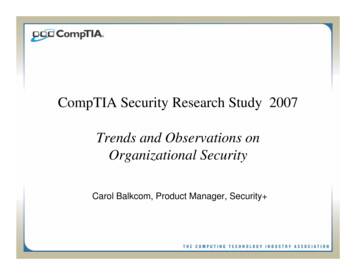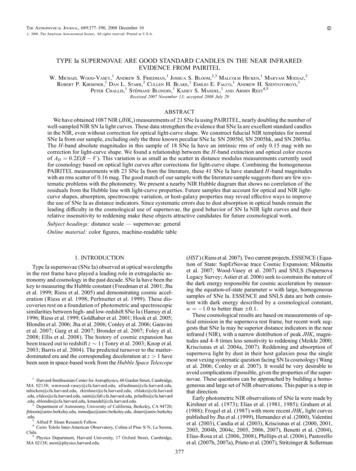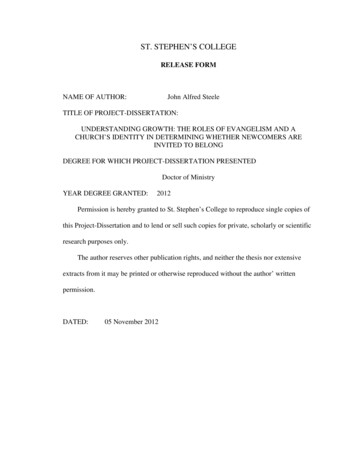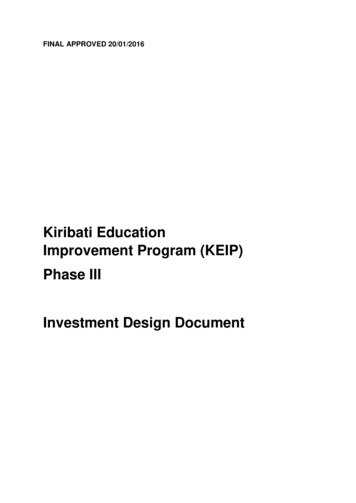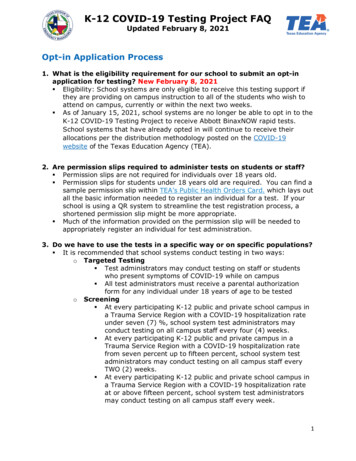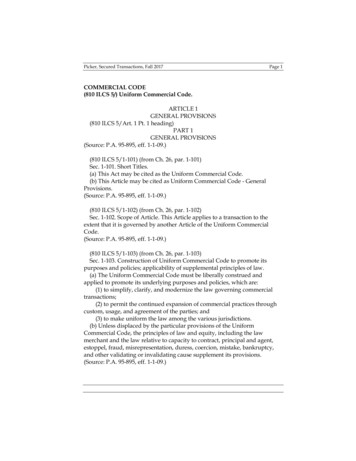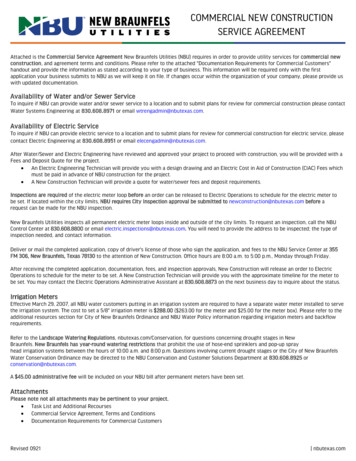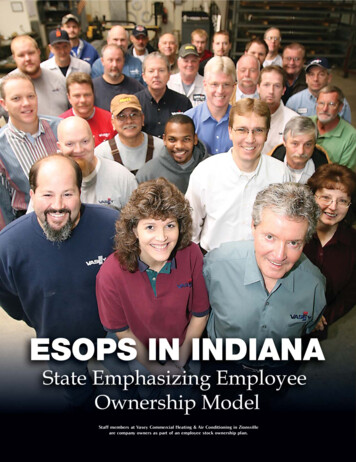
Transcription
Staff members at Vasey Commercial Heating & Air Conditioning in Zionsvilleare company owners as part of an employee stock ownership plan.
As Indiana economic development leaders continue the focus on keeping businessesin-state, some are pointing to employee ownership as a means to help facilitatethis objective. Consequently, employee stock ownership plans (ESOPs) are nowbeing regarded as not just a method to motivate employees, but also a way toprevent businesses from transferring ownership outside of Indiana.An ESOP is an employee benefit plan that turns employees into stock ownersof their company. In an ESOP, a company sets up a trust fund into which it contributes newshares of its own stock or cash to buy existing shares. According to the National Center forEmployee Ownership’s web site, “the ESOP can also borrow money to buy new or existingshares, with the company making cash contributions to the plan to enable it to repay the loan.Regardless of how the plan acquires stock, company contributions to the trust are tax-deductible,within certain limits.”Richard Mourdock, Indiana state treasurer, says ESOPs are structured so the entire staff of acompany benefits.“Each year when a company is profitable, the board of directors or ESOP trustees determinehow much of the profit is used to pay off ESOP debt and how much is used to buy employeestock,” he reports. “It’s based on a percentage of payroll per person, so there’s a formula in placeso it’s not just the top employers who get all the stock.”By Matt L. OttingerA state treasure?ESOPs have become such a priority in Indiana that Mourdock is leading an initiative toplant the employee ownership seed throughout the Hoosier state.“I’ve been referred to as the ESOP evangelist,” he quips.Mourdock reports his sermon began shortly afterbeing elected to the post in 2006.“I sat down with the governor and told him I wantedIndiana to be the leading state on ESOPs in the country,”he says. “They give higher returns on investment andequity than other plans. Then I told him there has neverbeen an ESOP company move to Mexico or China. That’swhen he said, ‘Oh, now I get it.’ ”Mourdock adds that the overall goal is to prevent thedrain of assets out of the state, and that an ESOP served asa personal blessing to him. He was an employee andpresident at Koester Mining, Inc. in Evansville.“When I left Koester in 2000 (after having an ESOPsince 1984), I didn’t have to worry about retirementsavings for a couple years,” he notes. “In fact, at age 50, Iwas able to write in my day planner: ‘Today I begin thesecond half of my working life.’ There’s not a lot of people who are given that kind of freedom atage 50, and I have an ESOP to thank for that.”A geologist by training, Mourdock now negotiates the rugged terrain of retirement savingsin Indiana in an effort to help Hoosiers take ownership in local companies in more ways thanone. He also hopes to find ways to motivate banks to fund ESOPs more readily.“ESOPs give employees a sense of long-term commitment in their jobs and what theircompany does,” he explains. “It’s also great to see people who otherwise would never investbuild impressive portfolios.”He adds that through his experiences in traveling to ESOP companies, Mourdock has heardworkers debate the most minute details while moving materials in an effort to protect the company’sbottom line as well as their own savings.In order to educate companies about employee ownership, Mourdock has formed threeESOP committees – finance, legislative and education/outreach – comprised of business leadersin the state. He explains that nothing definite has been planned in terms of specific action atthe state level.“A lot of that is still being decided,” he says. “There are some things I can do without theLegislature and the governor, but there are some things I might want to run by the Legislature inJanuary/February 2008 – BizVoice/Indiana ChamberTreasurer of State RichardMourdock (right) discusses ESOPswith his communicationsdirector, Chris Conner. Mourdockis leading an initiative to makeESOPs more popular in Indiana.13
4,0002,0000Indiana is one of 18 statesinvolved with the national ESOPSource: The ESOP AssociationAssociation.“Our main objective is to be an educational resource forIndiana companies who either have ESOPs or are in theexploratory phase,” offers Indiana ESOP Association chapterpresident Andy Manchir.Each year, the association hosts an educational eventcalled “ESOP Round Tables and Round Ball” at ConsecoFieldhouse (to be held on February 1, 2008) that coincideswith an Indiana Pacers game. The event is open to existingESOP companies and employees, as well as those interested inlearning about ESOPs, according to Manchir.The ESOP Association estimates that Indiana had 226ESOPs in place in 2004, although the totals can be difficult toquantify.“(Estimating the number of ESOPs in the state) can behard to measure because closely held companies don’t havethe same reporting standards as other companies,” Manchirqualifies.Steve Smith, a partner at Krieg Devault LLP in Indianapolis,is an ESOP proponent and labels his firm as “the largest ESOPpractice in the state” since it has four staffers dedicated to thesubject. He ranks Indiana’s ESOP status as “fair” when comparedto other parts of the country.Mourdock agrees, contending that states bordering Indianaare further along in ESOP adoption.“Illinois, Wisconsin, Michigan, Ohio, Kentucky – theyall have more ESOPs than we do,” he says. “They’re reallypopular on the West Coast in California, Oregon and Washingtonas well.”Ohio specifically utilizes financial resources available tohelp companies become employee-owned. Steve Clem, seniorprogram coordinator for the Ohio Employee 981In IndianaCenter (OEOC) at KentState University, explains agrant is available throughthe Ohio Department ofJob and Family Servicesthat aids in prefeasibilitystudies for employees andcompanies that want toexplore employee ownership.“The studies areconducted to see ifemployee ownership is aviable alternative to jobloss in a particular situation,”Clem notes.He adds that there is 150,000 available eachyear, and that each studytypically costs 10,000 to 20,000, depending on thecompany.Ohio also enacted theEmployee OwnershipAssistance Act in the late1980s, which recently hadits sunset clause repealed so it’s now a permanent part of Ohio’scode. The act requires the Ohio Department of Development(ODOD) to promote and assist employee ownership in Ohio.The ODOD contracts with the OEOC to deliver those services.“We then provide education and preliminary technicalassistance to groups pursuing employee ownership,” Clem explains.“We can save them a lot of money because our service is free.So when they need to speak with professional service providers,they will go in with a lot more knowledge than they wouldhave otherwise.”Approximate Number of OperatingESOPs in the United States1974order to give our actions more credence.”Mourdock adds that if addressedby the Legislature, ESOPs could trulybe a bipartisan effort.“I think Democrats would supportthis because it really helps the workingman, and Republicans would supportit because it’s all about creatingwealth,” he states.When asked if he anticipatespublic funds being allocated towardESOPs, Mourdock explains that alsohas yet to be decided.“It would be great if all I had todo was use the pulpit (as treasurer) tostart making companies aware ofESOPs and then start implementingthem, and then all the state wouldincur was nothing more than mytraveling expenses,” he notes.Could ESOPs flop?ESOPs have existed in Indiana since the 1970s and havenot been without critics. Even advocates of the programsconcede there can be logistical problems when not approachedappropriately.“These are complex and highly regulated because of thetax benefits involved,” Smith says. “They require professionalservice providers like lawyers, firms and trustees. If mistakesare made in the implementation, fixing the mistake can bevery expensive because of the penalties. The key is to get theright advisors.“In the early days, some were put in and not structuredproperly and a few were done negligibly,” Smith adds. “Theyeither took on too much debt or failed to plan for repurchaseliability.”Bill Waltz, Indiana Chamber director of tax and fiscal policy,is a member of the state’s ESOP Legislative Review Committee. Hebelieves the complexity may be a hindrance for some businesses.“ESOPs are a great option, but they’re complicated andexpensive, so the tool isn’t being utilized as often as it couldBizVoice/Indiana Chamber – January/February 2008
ESOP Factsexplains. “It’s a trust; it relies on existing management. It doesn’twant a seat on the board.” The ESOP Association represents over 1,400 ESOPcompanies. Total membership is over 2,500.In practice Approximately 99% of ESOP Association members areprivate, closely-held companies. ESOPs exist in large and small companies – 71% ofAssociation members have less than 250 employees. While ESOPs are prevalent in a broad range of industries,approximately 28% of Association members are inmanufacturing, followed closely by construction anddistribution at 13%. 87% of Association members offer a supplemental benefitplan in addition to the ESOP, including 401(k) plans,pension plans and profit sharing plans. 82% of ESOP Association members report that motivationand productivity increased as a result of the ESOP. ESOP Association members report the average contributionthe company makes to the ESOP each year, as a percentageof covered compensation, is 13%.This information was obtained from the “2005 Company Survey,” conductedamong ESOP Association members and listed on the association’s web site.and probably should be,” he states. “The initiative (by thetreasurer) is to help companies through both the complicationsand expense issues.”Mourdock explains that with consulting involved, acompany could incur costs of 30,000 to 80,000 during theconsideration process alone.Additionally, Smith contends that some companies mightbenefit from avoiding ESOPs all together if their earnings lackstability.“ESOPs are definitely not for every company,” he says.“Let’s say you’re a small manufacturing company with volatileearnings; you’re probably not a good candidate because youneed stable revenue to pay the debts involved with ESOPs.”Manchir states smaller companies could have a moredifficult time wading through the technical aspects of ESOPimplementation.“It’s very complex,” he says. “Larger companies are used to thatcomplexity, but it can be jarring for smaller companies; you haveto understand the technical terms, valuation and other legal matters.”Manchir adds that a company must be of sufficient size toadopt an ESOP, stating an organization with 1 million in saleswould probably be undersized, and a company gaining 3million to 5 million in sales would be a candidate for an ESOP,albeit a small one.Smith, though, sees the greatest condemnation of ESOPsas a problem of perception, not reality or inherent limitations.“I’m not sure why, but a lot of business owners thinkthey’ll lose control of the company (by adopting an ESOP),” he16Rieth-Riley has called Goshen home since 1916. It nowhas several locations in the Midwest and boasts a workforce ofaround 1,800 (with roughly 400 invested in the ESOP). Thecontractor has built a healthy portion of Indiana’s roads andhighways and was actually awarded the Indiana Department ofTransportation’s first contract.According to Brian Inniger, Rieth-Riley executive vicepresident of finance/administration, the ESOP was adopted in1985 after weighing different options.“The Rieth family was looking at succession options, andESOPs had great tax benefits,” he says. “The workforce wasmultigenerational; there were fathers and sons both workinghere so they wanted to do something for them.”Inniger notes the company became 50% invested in the ESOPin 1985, and then bought the other 50% in 1992 to becometotally ESOP-owned. Now a point of pride with the company, themain page of its web site boasts, “We are a 100% employeeowned company. This results in ownership pride in our work.”In fact, 75% of registered ESOP companies advertise the fact thatthey’re employee-owned, according to the ESOP Association.Not only is the ESOP mentality used to attract customers,but it’s also a means to attract a talented workforce.“It’s a big recruiting and retention tool,” Inniger confirms.“I think it’s less of a factor when we hire younger workers, butit’s a big factor with middle-aged workers, and we get a lot ofexperienced people wanting to work here because of the ESOP.It’s also a key reason we have very low turnover.”Inniger believes that ESOPs can get an undeserved, negativereputation from the media and others.“ESOPs seem to only make the news when it’s negative,but there are so many variations that you can’t lump them allinto one,” he says. “It’s a shame some people abuse them, likeEnron, but we’re a good example of an ESOP done right. Someof the balances are in the six and seven figures for people whootherwise wouldn’t have a lot in terms of savings.”Inniger also explains that Rieth-Riley’s ESOP does notallow employees to purchase company stock.Largest Corporate Members of ESOP AssociationCompanyProcter and Gamble Co.The Sherwin-Williams Co.Anheuser-Busch CompaniesAmsted IndustriesParsons CorporationLifetouch, Inc.Brookshire BrothersFerrell CompaniesW.L. Gore AssociatesNumber ofLocationParticipantsCincinnati, OH40,000Cleveland, OH32,000St. Louis, MO17,200Chicago, IL12,500Pasadena, CA12,000Eden Prairie, MN11,500Lufkin, TX9,000Liberty, MO7,400Newark, DE7,000BizVoice/Indiana Chamber – January/February 2008
“Participants can’t buy our stock; they work for usfor a certain period of time and then we give it to them,”he states. “It’s the benefit of ownership without the riskof ownership. We still encourage them to diversify too.”New to the mixBill and Kathleen Oliver poppedthe proverbial cork in celebrationof employee ownership in2006, bringing an ESOP toOliver Winery in Bloomington.Many Indiana University graduates are likelyfamiliar with another ESOP company – Oliver Wineryin Bloomington. Even though the company has beengrowing on the vine since 1972, Oliver Winery’s ESOPwas just adopted in 2006.“The Olivers wanted a way to preserve the legacyand the culture of the business, and reward the employeeswho have made it so great,” explains senior vice presidentValerie Pena. “They had done some research and attendeda conference on ESOPs and decided this was the best way.”The winery is now a fully owned ESOP company,with 35 of its 80 employees qualified to be in the plan.Pena notes that employees are eligible after 500 hoursof service.To educate staff, the winery distributed a brochure to its employees upon the adoption ofthe ESOP. Included in the literature was a letter from president Bill Oliver, as well as a FAQsheet specific to the winery’s plan explaining how long it would take staff members to becomefully vested. It also explains that Monroe Bank is the ESOP trustee, indicating it’s the trustee’sjob to “make decisions that protect the interest of the ESOP participants.”Continued on page 64January/February 2008 – BizVoice/Indiana Chamber17
ESOPsContinued from page 17Additionally, Oliver Winery has created another educationcomponent by developing an ESOP Benefits Committee, madeup of managers on staff who can teach workers about the planand answer their questions.Like many who invest in the ESOP, Pena touts its earningpotential as a key attraction for talent.“It’s a great way to entice employees to come work for you;it’s an extra perk you can offer,” she says. “It’s a big reason whyI left the company I was with after 20 years to come here. Thisis a great company with a lot of growth still left, plus I knowI’ll benefit from my own hard work.”INFORMATION LINKResources: Richard Mourdock, Indiana State Treasurer, atwww.in.gov/tosSteve Smith, Krieg Devault LLP, at (317) 238-6218Andy Manchir, Indiana ESOP Association, at (317) 428-1134or www.esopassociation.orgBrian Inniger, Rieth-Riley, at (574) 875-5183Valerie Pena, Oliver Winery, at (812) 876-5800Steve Clem, Ohio Employee Ownership Center at KentState University, at (330) 672-033564BizVoice/Indiana Chamber – January/February 2008
Staff members at Vasey Commercial Heating & Air Conditioning in Zionsville are company owners as part of an employee stock ownership plan. By Matt L. Ottinger January/February 2008 - BizVoice/Indiana Chamber 13 A

